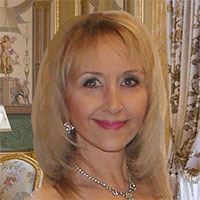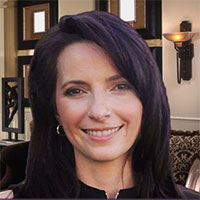How to Progress After a Breakup or Divorce
 Going through a separation or the conclusion of a significant relationship can feel as if your world is collapsing. The aspirations you shared, the existence you envisioned together, and all the emotional investment can abruptly appear to vanish.
Going through a separation or the conclusion of a significant relationship can feel as if your world is collapsing. The aspirations you shared, the existence you envisioned together, and all the emotional investment can abruptly appear to vanish.
It’s not solely about losing an individual; it’s also about relinquishing a future you once dreamed of. Finding a path forward can be challenging.
Nevertheless, amidst any conclusion, there exists a chance for a fresh and significant new start.
Recognizing that your relationship has concluded is one of the crucial steps in the healing journey. It’s natural to mourn what could have occurred, but refrain from lingering on the past. The past serves as a place for lessons, not a destination to inhabit.
Genuine acceptance involves releasing blame, bitterness, and regret. This isn’t to imply that the pain didn’t exist, but rather that clinging to it perpetuates the hurt.
Acceptance can be a struggle. It entails acknowledging that your life will appear different than you anticipated, while trusting that joy and beauty still await you. Numerous spiritual traditions remind us that everything happens for a reason, even if it’s not immediately clear. When we achieve acceptance, our heart chakra can reopen, releasing trapped emotions and making space for healing.
On a spiritual level, breakups and divorces often represent more than just emotional sorrow and distress. They can signify a form of spiritual awakening or reset. Relationships serve as mirrors, reflecting what we need to heal or comprehend within ourselves. When a relationship concludes, it may indicate that a soul lesson has been fulfilled or that a karmic cycle has reached completion. It’s frequently through profound pain that we start to evolve.
Divorce isn’t necessarily a tragedy. A true tragedy is remaining in an unhappy marriage, teaching your children distorted lessons about love. No one has ever died from divorce ~ Jennifer Weiner
Post-breakup, you might still feel a connection to your ex in invisible ways. These energetic bonds can subtly drain your energy and hinder your ability to progress. That’s why energy healing practices, like Reiki, chakra balancing, and cord-cutting, can be incredibly beneficial. These methods assist in reclaiming your energy and fostering tranquility and clarity within your mind and spirit.
Calming Your Mind
Following heartbreak, your mind can become a chaotic environment. Thoughts of “What if?” “Why did this occur?” and “I should have…” can play repetitively. This is why mindfulness, journaling, and guided meditation are invaluable. These activities can gently guide your thoughts from pain to tranquility.
You might also contemplate getting a psychic reading. A valuable reading isn’t solely about the future; it can also aid in understanding your spiritual journey, affirming your intuition, and providing comfort during uncertain moments. Such insights can serve as a guiding light when everything else appears bleak.
Cleansing Your Energy
When relationships conclude, invisible energetic connections may linger. These energy cords can maintain your attachment to the past in ways you might not consciously recognize. Hence, it’s vital to clear and cleanse your energy field as part of your healing journey.
Begin with a cord-cutting meditation. Visualize gently and lovingly releasing these old ties, or collaborate with a healer or reader to facilitate this process. You can also purify your aura using sage or palo santo smudging, or with sound healing tools like singing bowls. Additional beneficial practices include salt baths, spending time in nature, and utilizing crystals like black tourmaline or selenite.
Energy healing sessions, such as Reiki or chakra balancing, can be profoundly beneficial during this phase. These sessions can foster profound peace, restore your energy flow, and help you reconnect with yourself. As you eliminate outdated energy, you create space for new beginnings, inner peace, and brighter connections.
Letting go doesn’t indicate that you no longer care about someone. It’s simply realizing that the only person you can truly control is yourself ~Deborah Reber
Nourishing Your Body
Breakups can impact your physical well-being. You may experience feelings of fatigue, anxiety, or emotional numbness. This is merely your body processing everything. Engaging in movement can help alleviate some of that heavy energy. Embrace self-care practices like gentle yoga, nature walks, dancing, or even just stretching to assist your body and mind in feeling better.
Prioritize self-care for your body at this moment. Consume nutritious foods, stay well-hydrated, and ensure adequate rest. Indulge in a warm bath, receive a massage, or wrap yourself in your favorite cozy blanket. These small luxuries can provide comfort and healing. Show your body the affection it needs.
Healing Your Heart
Healing your heart involves allowing your emotions to be acknowledged and felt. Don’t suppress your feelings. Allow yourself to cry, record your thoughts in a journal, or compose letters that you won’t send. Emotions must flow through you, not get trapped inside.
Stay connected to people and places that uplift you. Consider enrolling in a meditation class or spiritual group, pursue heart chakra healing activities, or seek support through an online community. These engagements and relationships will remind you that you are not alone and that healing is achievable.
Create Space For New Beginnings
It’s perfectly fine to still wish for a reconciliation. However, ask yourself earnestly: Do you desire to be with someone who doesn’t choose you? You deserve someone who values your worth and genuinely wants to be with you. There’s magic on the horizon, but first, you need to create space to welcome it.
Release items that emotionally tether you, such as photographs, presents, or mementos. Consider cleansing your living space with sage, palo santo, or singing bowls. These straightforward rituals will assist you in resetting and inviting new energy into your life.
Every woman who finally recognized her worth has packed her bags of pride and boarded a flight to freedom, landing in the valley of change ~ Shannon L. Alder
Practical Tips For Moving Forward
✵ Schedule an energy healing session to release old energy, reconnect with your strength, and achieve balance.
✵ Obtain a psychic reading to gain insights and encouragement as you navigate your next steps.
✵ Perform daily affirmations. Speak kind words to yourself, such as “I am healing,” “I am strong,” or “I welcome new love.”
✵ Move your body. Gentle activities like yoga, walking, or dancing can help alleviate heavy emotions.
✵ Establish a sacred space. Designate an area solely for you to relax, meditate, or journal.
✵ Experiment with simple rituals. Release ceremonies, burning letters, and crafting a healing altar can facilitate letting go.
✵ Be gentle with yourself. Healing isn’t linear. Some days will be challenging, and that’s perfectly fine.
✵ Surround yourself with uplifting energy. Engage with people and in environments that make you feel good.
This is your journey, and you have the power to shape it. Each day offers a fresh opportunity to choose love, commencing with self-love. Permit the sadness to flow through you; it won’t remain indefinitely. The path ahead may be uncertain, yet it belongs to you, and you need not tread it alone.
You are healing. You are rising. You are rediscovering your joy. Trust the journey, and have faith in yourself.
|
A Psychic, Medium, and Paranormal Investigator residing in New Jersey, Andrea has been a leading featured internet psychic for many years. She was born with unique psychic gifts. At 17, she experienced a catastrophic car accident and recalls a journey to the other side, narrating the indescribable beauty she encountered. She was given last rites but returned with significantly enhanced gifts—a blessing she cherishes to this day. It was her destiny to remain and assist others, which is precisely what she has been doing since! Her ability to help clients remember their past lives has enabled many to comprehend the direction they are headed in the future. Leveraging her Spirit Guides and Angels, she provides clarity on any matter, always honoring her clients while delivering honest insights. If you’re seeking an accurate reading from a compassionate, kind, and reliable Psychic and Medium, you can find Andrea at PsychicAccess.com. |















